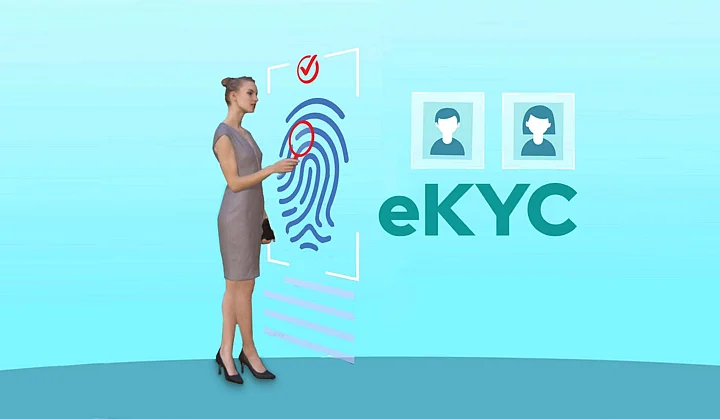While online interactions and remote transactions have become a norm, performing KYC procedures to verify the customer's authenticity and identity has become challenging. That is where the eKYC procedure steps in. With the age of digital verification, eKYC makes customer onboarding as simple as a swipe, click, or scan. In the following sections, we will shed light on what eKYC means, its benefits, and its implementation across the banking sector.
What is eKYC?
eKYC means the ‘Electronic Know Your Customer’ process, a digital procedure financial institutions use to verify their customer’s identity and conduct due diligence. A digital counterpart to the traditional procedure, it streamlines the customer onboarding process, minimises fraud risk, and enhances regulatory compliance in an organisation.
Importance of eKYC Solutions
Over the last few years, the Indian government has been strongly promoting digitalisation in the normal lives of citizens. The wide acceptance of UPI is a good example of the digital efficacy of the financial sector. Similarly, the manual KYC methods are complex and tedious, as visiting the bank branch and presenting physical documents slows down the process. Electronic KYC is a reliable, faster, simpler, and paperless procedure that automates the KYC process. It facilitates instant information and documentation verification compared to manual methods.
Benefits of eKYC
When upgrading from manual to electronic KYC, a financial institution must comply with the requirements to stay within budget and ensure information security. These are a few benefits of eKYC:
· No paper documents requirement, contributing to environmental safety.
· Mitigating the friction in consumer experience.
· Accomplishing all regulatory compliance requirements in different regions.
· Real-time screening to make the system more reliable
· Quick customer, PAN and Aadhaar-based verification
· Reduced workload for the financial institutions, enabling them to invest more time in their productivity rather than wasting their time on customer onboarding
· Reduced chances of human errors common during manual processes
· Instant approvals and speedy Aadhaar link bank account creation
· Prevents the sharing of sensitive data with third parties, making the system more reliable and confidential
Steps Involved in the eKYC Process
eKYC means more efficiency and simplicity, giving a sustainable approach to consumer identification. It replaces physical documentation and in-person meetings with online alternatives, reducing carbon footprints while speeding up the process. Here is how it works:
1. Registration: The process begins with online registration on the financial institution’s portal. It involves providing the customer's basic details, including their full name, contact details, date of birth, address, etc. By replacing the need for in-person appointments and physical forms, the digital KYC process allows customers to jumpstart their journey from the comfort of their homes conveniently.
2. Documentation: In the next step, the customer uploads digital copies of their identity proofs, including a driving license, passport, or UID card. Digitally submitting the required documents accelerates the KYC process and eliminates the requirement for physical documents that the customer may lose or damage during the process.
3. Verification: The financial institution uses scanned copies of the required documents to verify a customer's identity. Some financial institutions support automatic identification over video calls or employ facial recognition for extra security.
4. Data Validation: The finance company checks the submitted information against the databases to ensure authenticity before onboarding a customer and uer needs link aadhaar number with bank account online.
The Future of eKYC
As the eKYC procedure continues to transform the way financial institutions operate, its future is expected to bring several changes in the industry. Some of them are:
· More Automation: With technological advancements, expect the KYC process to see more automation to speed up the customer onboarding process. It might use machine learning and artificial intelligence to verify customer identities more accurately and quickly without manual intervention.
· Implementation of Biometrics: Biometric technology like fingerprint scanning and facial recognition might become more prevalent in eKYC procedures, adding an extra layer of security and accuracy.
· Remote Verification: Remote verification methods like video KYC will gain popularity, providing a secure and convenient way to complete the KYC process.
To summarise, eKYC signifies digital adoption to ensure customer verification. As a result, it enhances the overall security and efficiency of financial transactions. It is an innovative method of confirming customer identities, making the verification process more straightforward and quicker. Additionally, eKYC means reduced fraud, serving as a ground-breaking solution to reduce manual verification procedures.
